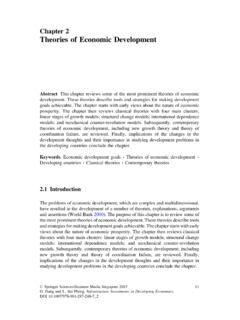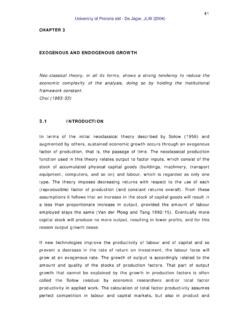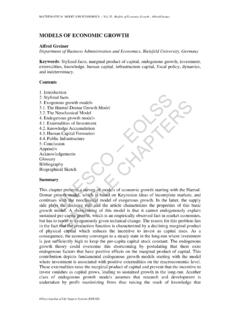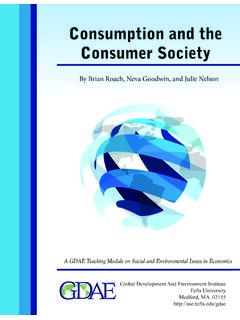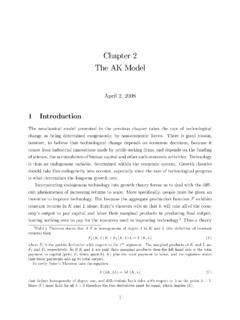Chapter 1 Neoclassical Growth Theory
Found 7 free book(s)Socio-Economic Development - Cambridge University Press
assets.cambridge.orgEach chapter includes comparative statistics and time series for thirty-one developing ... 3.4.1. Rostow’s theory of the stages of economic growth 87 3.4.2. Kuznets’ preconditions for industrialisation 89 3.4.3. Neoclassical theories of growth 90 3.4.4. Growth accounting 92 3.4.5. New growth theory 93 3.4.6. North and Thomas: efficient ...
Technological Change and the Environment Handbook …
scholar.harvard.edu3.1.1. Neoclassical induced innovation 469 3.1.2. Market failures and policy responses 471 ... see Solow (1999) on neoclassical growth theory, Grossman and Helpman (1995) on technology and trade, Evenson (1995) on technology and ... marketing methods, and so forth. In this chapter, we use the word innovation as short-hand for the more ...
Chapter 2 Theories of Economic Development - cicgeounit2
www.cicgeounit2.weebly.comThe chapter then reviews classical theories with four main clusters: linear stages of growth models; structural change models; international dependence models; and neoclassical counter-revolution models. Subsequently, contemporary theories of economic development, including new growth theory and theory of coordination failure, are reviewed ...
CHAPTER 3 EXOGENOUS AND ENDOGENOUS GROWTH
repository.up.ac.zathat “they are what most of the theory of economic growth actually explains”. The exogenous technical progress of the neoclassical theory fits into Kaldor's stylised facts (Van der Ploeg and Tang 1992:16). Kaldor’s (1961:178-179) “stylised facts” are as follows: • continued growth in the aggregate volume of production and in labour
Models of Economic Growth - EOLSS
www.eolss.net3. Exogenous Growth Models 3.1. The Harrod-Domar Growth Model The Harrod-Domar growth theory is based on the work by these two authors. They developed their models independently, but the assumptions and results are, nevertheless, basically the same. They built their theory in the late 1930’s and mid 1940’s, when the
Consumption and the Consumer Society - Boston University
www.bu.eduthe neoclassical economic theory on the topic. The neoclassical model is based on overly simplistic assumptions about human behavior, but it still provides a useful basis for thinking about consumption decisions. 1 Jackson, 2008, p. 49. 2 McDonald, 2015.
Chapter 2 The AK Model - Brown University
www.brown.eduChapter 2 The AK Model April 2, 2008 1 Introduction The neoclassical model presented in the previous chapter takes the rate of technological change as being determined exogenously, by non-economic forces. There is good reason, however, to believe that technological change depends on economic decisions, because it


